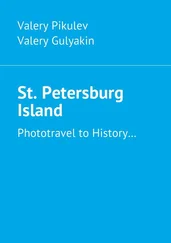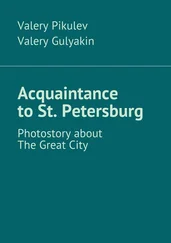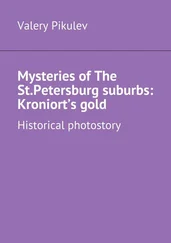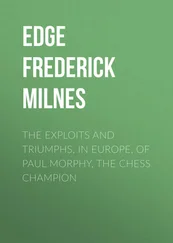St. Petersburg Fortress
Photostory about The Peter and Paul Fortress of St. Petersburg
Valery Pikulev
Valery Gulyakin
© Valery Pikulev, 2018
© Valery Gulyakin, 2018
ISBN 978-5-4485-6387-4
Created with Ridero smart publishing system
Dear reader! Last time we left you as it is remembered, on Troitsk to the bridge (see Valery Pikulev and Valery Gulyakin’s book “Acquaintance to St. Petersburg. Photostory about the Great City”). What brought us on this bridge? – Yes, it is simple, from it, from Trinity Bridge, it is possible to survey all historical part of St. Petersburg at once, “right on the spot”. Moreover, for most of guests of St. Petersburg, and they arrive in our city, as a rule, from the South (from Moscow), it is simple not to bypass this bridge. Now “it is necessary to descend from the place”, nevertheless, – we pass from “nodding” acquaintance to the Great City to deeper which for the majority, it is sure, will turn into great friendship, – so, it is necessary to descend from Trinity Bridge and to go there from where the city began.
And so far we will look once more at our handsome, – at Trinity Bridge.
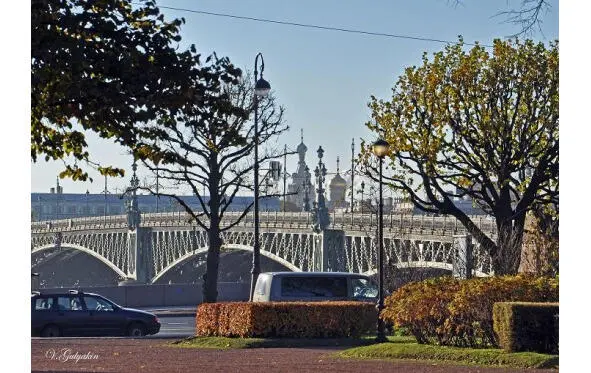
Trinity Bridge. View from the right coast of Neva
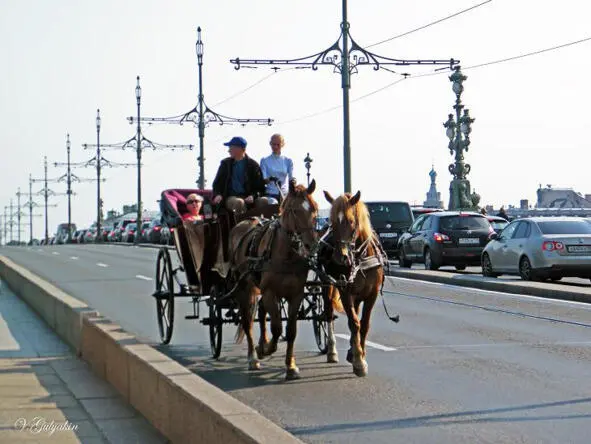
…Like the good old days!
Rainy October, 1702. Troops of the associate and the friend Peter I, the general field marshal Boris Sheremetev take storm the Swedish fortress Noteburg. Pyotr participates in this nice business! No, not in the Commander-in-chief rank – save, God! – and only goal-scorer captain: he has no need “to be stuck out”, he and so – Pyotr The Great! This fortress, having a reputation for unapproachable hitherto, costs on the island in the mouth of the Neva River and, together with other fortress, – Nienschanz, – that is lower on a current, controls, and, speaking simply, – tightly bars for Russians all waterway from Lake Ladoga to the Baltic Sea. In half a year, at the beginning of May, 1703, the Nienschanz is given. Without fight.
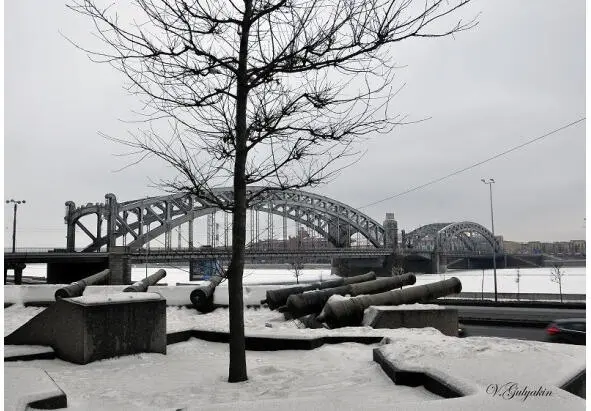
Symbolical reconstruction of fortress Nienschanz
Well, on the lands which are just won from the Swede, on this major water communication, it is necessary to be fixed. Prompt in the rushes Pyotr makes the fast decision! And here, on May 16, 1703 – remember this blessed date (in old style)! – marshy coast of the Nevsky delta are disclosed by amicable knock of axes and squeal of saws: the forced construction of fortress began. – And, of course, on the island, that around water! The island is this, known to Swedes as Lust-Eland (“cheerful”), and to Finns – Enisaari, by Russians it was nicknamed Hare. But, about it a bit later…
Generally, St. Petersburg is located more than on 30 islands (and to these nobody found time to bring full clarity in this question: some bring their number to the 42nd if to consider also artificial). In the city 342 bridges (and together with suburban, there are a lot of more than five hundred: call even number 580). Five hundred bridges which hung over nearly fifty rivers, channels, small rivers and channels – than not Venice!
Let’s return, however, that May day. “In the 16th day of May (in a week of Pentecost) fortress is put and called Sanktpiterburkh” – so about this event the tsar Pyotr will write! This date – on May 16 (on May 27 on new style) 1703 – is also the Birthday of St. Petersburg!
Dear reader, at you can arise a reasonable question: and why, actually, on May 27, but not the 29th … – upon transition from the Julian calendar, – by the way, one of Pyotr’s reforms to which time in Russia was considered not since Christmas, and… from creation of the world! – and so, upon transition from the Julian calendar to Gregorian on which there lives the whole Europe it would be necessary to add 13 days, but not 11. And it is absolutely fair … – for start date of the twentieth century. To dates of the nineteenth century agreed to add only 12 days; for the 18th – already 11. And for all other centuries leaving deep into stories add 13 days, again “not to take a steam bath”. There is such piece!
The small island on which put fortress is separated from the neighboring huge island rather narrow, but quite fast by a channel. From this blessed island, all also began with it. There, on this small island, we will also go.
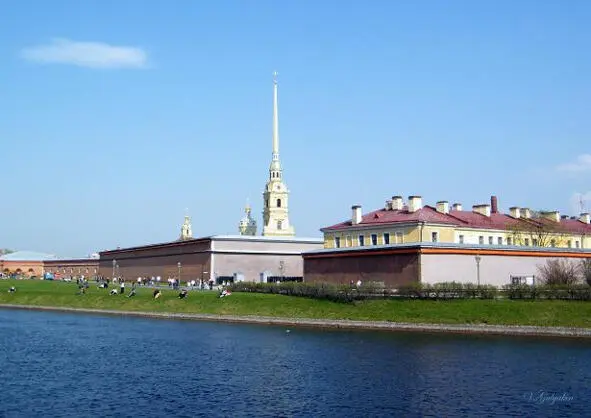
Type of The St. Petersburg (Peter and Paul) Fortress from a channel. Big Neva – at the left (off-screen)

And so “Peter and Paul Fortress” at a descent from Trinity Bridge looks
“Storm” of The St. Petersburg Fortress
Well, we start “storm” of The Peter and Paul Fortress … – quite so we, Petersburgers, in a familiar way we call Peter and Paul and if absolutely officially, – St. Petersburg – Fortress. Before starting this no laughing matter, – detailed acquaintance to fortress, – investigating all its back streets and being inspired by genius of architectural concepts, we will approach at first Ioannovsky Bridge, to very first of the St. Petersburg bridges. However, in those far times it was called Petrovsky…
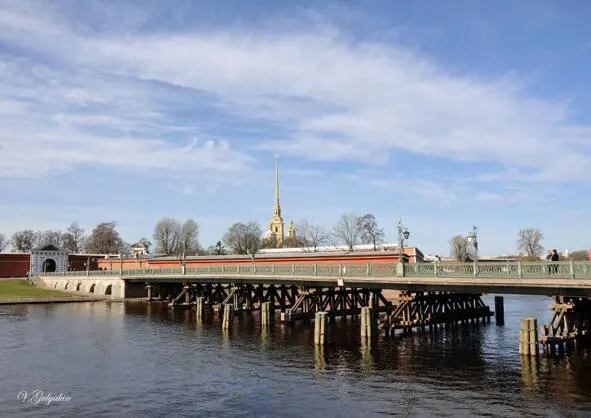
Ioannovsky Bridge through the Kronverksky passage (through that to a channel)
On one of pile ice-cutting blocks before the bridge the figure of “the hare who escaped from a flood” established here to the 300 anniversary of the city is well distinguishable. On one of legends, during a flood the hare found rescue, having jumped on a boot to the tsar Pyotr… Here, tourists “for luck” also throw coins, trying to get a hare directly into a pan!
Ioannovsky Bridge – one of two ways conducting in The Peter and Paul Fortress.
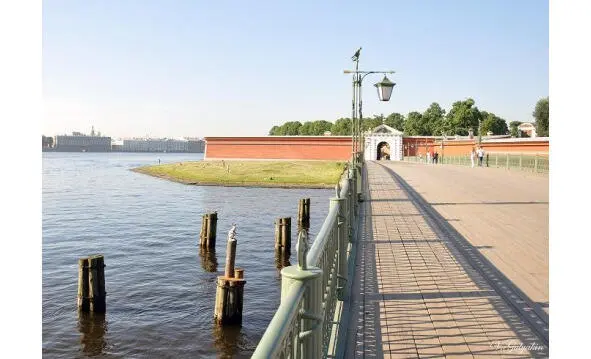
One more symbol of the city: the hare who escaped from a flood
The bridge is thrown through the Kronverksky passage and connects the Hare island on which the Peter and Paul Fortress is located, to the Petrograd island where we now also are, having descended on it from Trinity Bridge.
Petrovsky Bridge, namely so it was called in the beginning, arose at the same time with construction of The St. Petersburg Fortress, was adjustable and leaned on wooden barques. Then, in 1706, instead of the floating bridge appeared lifting, already on the wooden piles replaced subsequently with stone foundations. Since 1887 began to be called Ioannovsky – according to the name of one of fortress ravelins.
A little more than 150 meters long and 10 meters wide, the bridge does not suppress the sizes, but its wooden flooring which is boomingly “giving” steps, a decor of a protective lattice with “semi-antique” lamps… Yes, link of times is felt here – mighty well!
Читать дальше















